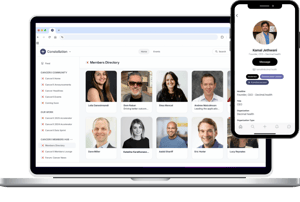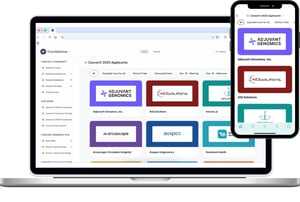
The ROI Timeline: Measuring Success in Digital Health Innovation Communities
Healthcare organizations investing in innovation communities frequently encounter a deceptively straightforward question: "What's the ROI?" The reality, however, extends far beyond conventional return calculations. Collaborative innovation creates multifaceted value that develops across various timeframes, from immediate efficiency improvements to long-term transformation of healthcare delivery and outcomes.
This evolving value creation model is changing how visionary healthcare leaders approach innovation investment decisions. Research demonstrates that organizations participating in structured innovation communities achieve up to 60% faster time-to-market and 40% higher implementation success rates compared to traditional approaches. Yet these impressive statistics merely hint at the complete value proposition.
The return on investment from healthcare innovation communities transcends financial metrics alone, creating a progressive cascade of benefits that evolve and compound with time. During the first year of engagement, organizations typically realize several immediate advantages. Innovation communities deliver an average 30% reduction in development costs through shared expertise and collaborative problem-solving. Healthcare systems partnering with startups and technology developers can leverage specialized capabilities without building them internally. Access to diverse stakeholders across the healthcare ecosystem builds relationship capital that yields benefits throughout the innovation lifecycle, forming invaluable connections for navigating complex implementation challenges. Community participation provides unique exposure to emerging trends and technologies, giving organizations strategic intelligence that shapes planning decisions.
A leading health system CIO recently remarked, "The insights we gained in our first six months of community participation helped us avoid several costly technology investments that would have failed in our environment – that alone paid for our community investment several times over."
As community participation matures, organizations begin experiencing more substantial benefits. With regulatory navigation assistance and early stakeholder feedback, solutions developed through community approaches reach implementation significantly faster than traditional methods. Community-enabled innovation delivers higher success rates because solutions integrate implementation considerations from inception rather than treating them as afterthoughts. Continuous feedback from clinicians, technologists, and payers produces solutions better aligned with real-world needs and usage patterns. Strategic relationships formed through community engagement frequently evolve into formal business partnerships extending beyond specific innovation projects.
The Penn Medicine Center for Digital Health demonstrated this progression when their community-developed remote monitoring solution moved from concept to full implementation across five hospitals in just 14 months – less than half the time their previous initiatives had required.
The most significant benefits emerge after sustained community engagement. Community-developed solutions that undergo rigorous collaborative testing and refinement deliver measurable improvements in patient care metrics. Mature innovation communities begin reshaping care delivery models, establishing new standards that influence the broader healthcare ecosystem. Integration of complementary solutions developed within the community creates compounding efficiency gains across care settings. Perhaps most valuable, organizations develop internal innovation capabilities through community participation that enhance their adaptability to future challenges. Organizations in mature innovation communities report 3x higher implementation success rates and substantially greater market impact than those following traditional innovation approaches.
Capturing the value of innovation community participation effectively requires multidimensional measurement approaches. Organizations should track both tangible outputs like implemented solutions and cost savings alongside relationship development metrics including new partnerships and knowledge transfer activities. Frameworks should recognize diverse innovation contributions, from clinical insights to technical development to implementation support. Impact measurement should extend over longer timeframes to capture system-level improvements and organizational capability development. Value creation should be demonstrated to all stakeholder groups to maintain engagement and justify continued investment.
As healthcare becomes increasingly interconnected, the most successful organizations will be those that effectively leverage community-based innovation to accelerate their transformation journeys. By understanding how value creation evolves over time, leaders can make better-informed investment decisions and communicate a comprehensive ROI narrative to stakeholders. The innovation community ROI journey isn't immediate – it's an investment in developing both near-term solutions and long-term innovation capabilities that will define success in future healthcare environments.
To discover the complete ROI framework for healthcare innovation communities and learn how to implement effective measurement approaches in your organization, download the complete white paper, "The Power of Community: Revolutionizing Digital Health Innovation Through Collaborative Ecosystems," for a detailed framework to guide your strategic decision-making process.
SCHEDULE A MEETING WITH AN EXPERT
Ready to innovate? Decimal Health is standing by to assist with your next Digital Health venture.
.png?width=125&height=125&name=logo_wt%20(3).png)






.png?width=300&name=CancerX%20Decimal%20Banner%20(2).png)